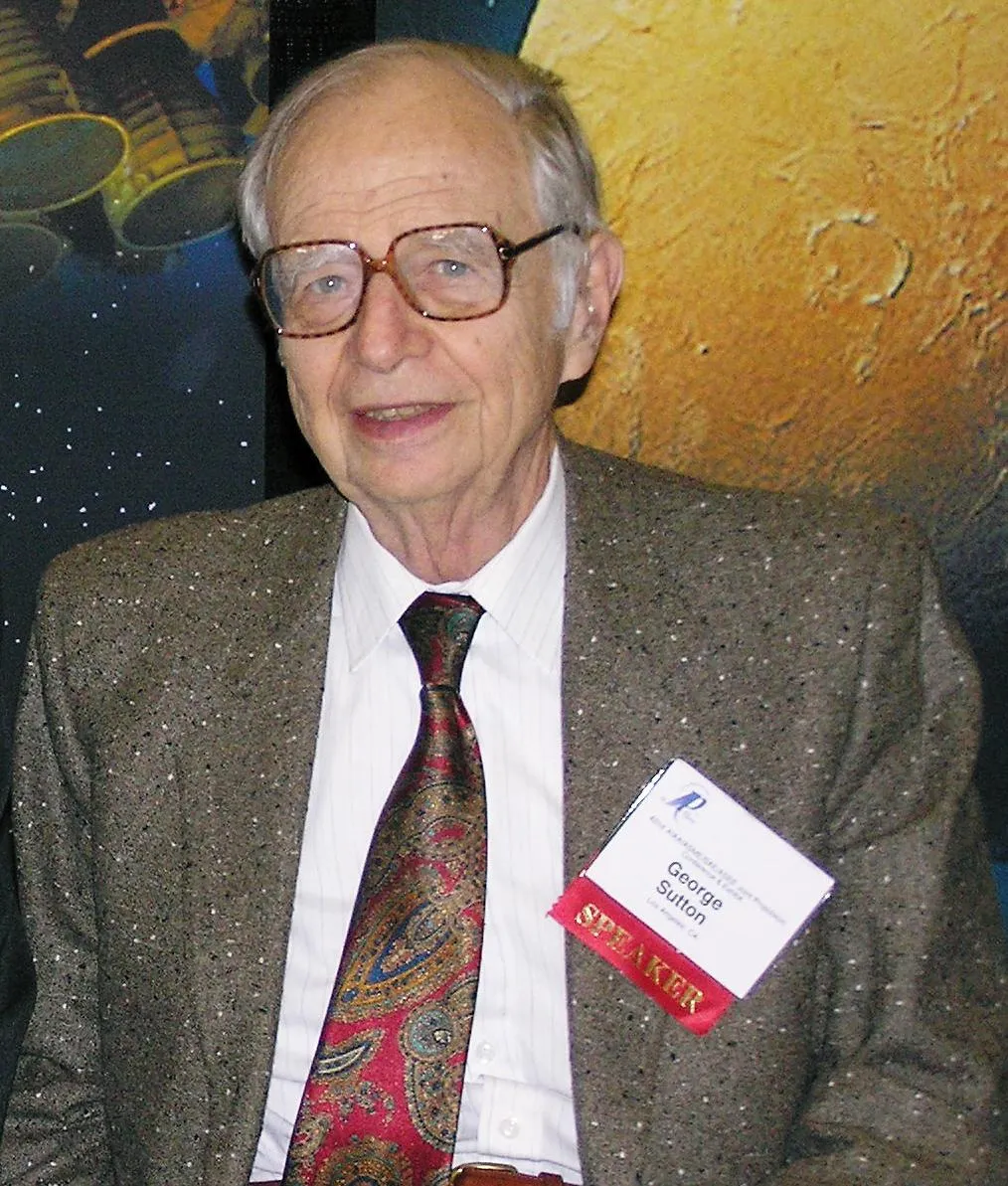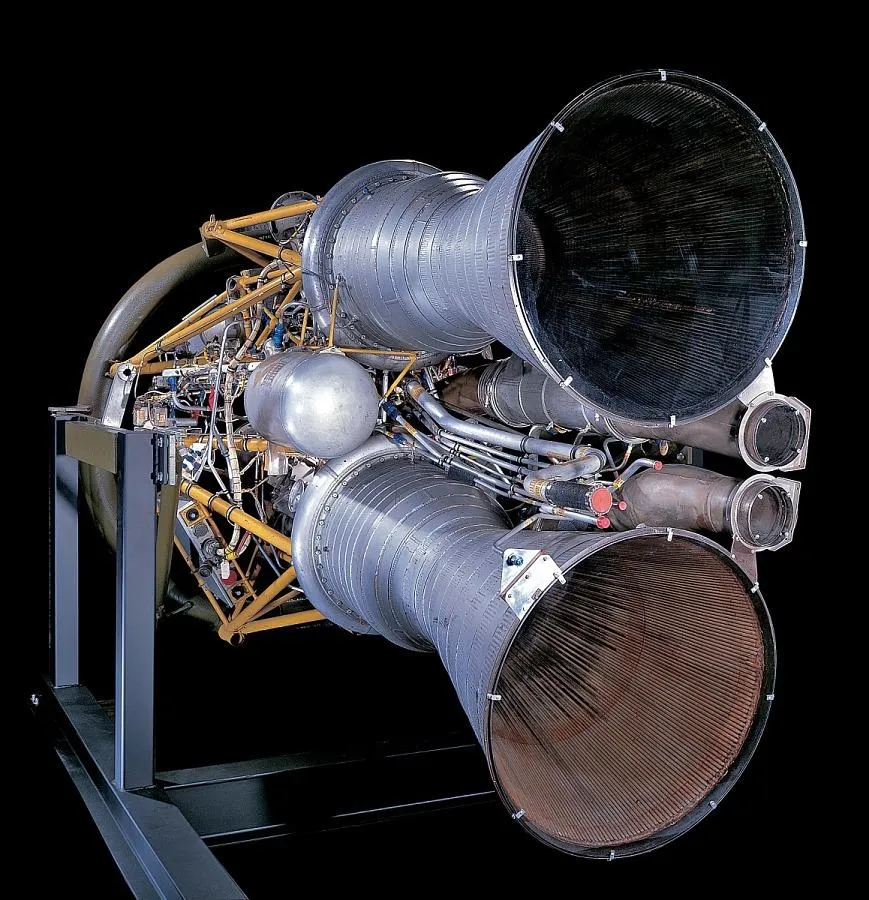George Sutton, the (Other) Father of American Rocketry
Born 100 years ago, he left his mark on nearly every major launch vehicle of the 20th century.
/https://tf-cmsv2-smithsonianmag-media.s3.amazonaws.com/filer/cf/99/cf995846-c4c9-45d0-8374-c52784834a32/ksc_visitors_center_rocket_garden.jpg)
Most histories of space technology give Robert H. Goddard pride of place as the principal figure in early American rocket science. The recognition is based mainly on his lifelong propulsion experiments starting as early as 1915 and his successful launch of the world’s first liquid-propellant rocket on March 16, 1926.
But Goddard was far from the only rocket researcher active before the Space Age began. One such pioneer, George Sutton, passed away last month from natural causes, just a few weeks after his 100th birthday. Although he’s nowhere near as well known as Goddard, Sutton was an important figure who played a key role in developing the engines for U.S. launch vehicles from the Redstone to the Space Shuttle.
Born George Paul Erich Schulhof in Vienna, Sutton was compelled to leave Austria for the United States in June 1938, just three months after the Anschluss. Traveling alone, the 17-year-old was listed as a student on ship passenger lists. After settling in Los Angeles with the family of his uncle, he later anglicized his name to George Paul Sutton and applied to become a U.S. citizen. Although he originally intended to follow family tradition and become a medical doctor, his interests soon took a different direction. After obtaining an associate of arts degree in Mechanical Engineering from Los Angeles City College in 1940, he went on to earn a master’s degree in the same field from Caltech in 1943.
Following his graduation that spring, he joined the Aerojet Engineering Corporation (now Aerojet Rocketdyne), which had just opened its doors in Pasadena a year earlier as the second liquid-propellant rocket company in the United States. During this formative period of the American rocket industry, the main focus was not missiles but JATOs—Jet-Assisted-Take-Off units—to shorten the take-off distances for heavily loaded aircraft.
Sutton’s first jobs at Aerojet involved rocketry, however, under the guidance of Theodore von Kármán, the company’s first president. Sutton became a test engineer on a nitric acid/aniline thrust chamber, then worked on Aerojet’s unique, double-chambered rocket engine intended to power the ill-fated Northrop XP-79 Flying-Wing interceptor, which was canceled after one fatal test flight.
He stayed at Aerojet until 1946, then joined North American Aviation as a research engineer to continue his work in rocketry. The U.S. Army Air Forces had recently invited aviation companies to bid on preliminary designs for guided missiles, and NAA’s proposal for a 100- to 500-mile range missile called Navaho (for North American Vehicle [using] Alcohol [and] Hydrogen Peroxide and [Liquid] Oxygen) was accepted.

Although North American had no experience in rocketry, it did have highly competent engineers and planners, and the company established a new Aerophysics Laboratory to take on the challenge. Along with his experience working with liquid-fuel rocket motors at Aerojet, Sutton’s native German was especially prized, as the Navaho team intensely studied blueprints and hardware from captured V-2 rockets. Sutton was one of the first U.S. rocket engineers sent to Fort Bliss, Texas, to interrogate Wernher von Braun, the former technical director of the V-2 program who had surrendered to the Americans at the close of the war. Besides interviewing other Germans on von Braun’s team, he was among the engineers who completely dismantled a V-2 engine or two to see how they worked and how they were made. These engines, as one later historian of Rocketdyne put it, “were torn down and dissected in fine detail.”
Under Phase 2 of the Navaho project, NAA began constructing replicas of the V-2 engine under Sutton’s supervision, one of which is in the collection of the National Air and Space Museum. These weren’t precise copies—the Americans used English rather than metric measurements, along with American screw threads, O-rings and other parts. The captured V-2 engines had come to the United States minus their turbopumps, so American-manufactured aluminum pumps were substituted for the original German steel pumps.
Through its long history, the Navaho research project grew by leaps and bounds, eventually evolving into an ICBM with a range of 5,000 miles. Although it never was deployed, Sutton was in charge of the chamber design and development for the Navaho’s booster engine, designated the XLR-43-NA-1, which was a revolutionary departure from the old hourglass-shaped V-2 engine maligned by some early rocket engineers as “a plumber’s nightmare.” First fired in November 1949, the XLR-43, still using the V-2’s liquid-oxygen and alcohol propellant combination, generated about 75,000 pounds of thrust compared with the V-2’s 56,000 pounds.
By the early 1950s, von Braun and his former V-2 team members had moved to Huntsville, Alabama, where they developed the Redstone missile that would eventually morph into the rockets that launched America’s first satellite, Explorer 1, and lifted Alan Shepard, America’s first astronaut, into space. But it was an engine derived from Sutton’s XLR-43 that provided the power.
When North American created its Rocketdyne Division in 1955, Sutton was put in charge of the Advanced Design and Development Section, where he oversaw the evolution of Navaho technology for use in the Thor, Atlas, and Jupiter missile projects. Those engines were followed in turn by the H-1, J-2, and huge F-1 for the Saturn V rocket that sent the first astronauts to the moon. Sutton personally conducted the initial layouts for the J-2 and F-1 engines. In later years, the Space Shuttle Main Engine (SSME) would be added to the evolutionary line of Rocketdyne power-plants.
Sutton’s influence went beyond engineering. From 1959 to 1960, he was granted temporary leave from Rocketdyne to work as chief scientist and deputy director of the new Defense Advanced Research Project Agency (DARPA) formed to beef up U.S. science and technology in response to the Soviet Sputnik launch. After his return to Rocketdyne he served for eleven years as a member of the Scientific Advisory Board for the U.S. Air Force.
Even though Sutton’s career came after Goddard’s, he didn’t benefit from the older researcher’s work. In his comprehensive History of Liquid Propellant Rocket Engines, published in 2006, Sutton referred to Goddard’s “really astonishing LPRE (Liquid Propellant Rocket Engine] ideas and test results.” But, he wrote, Goddard “published very little about his work on LPREs [in his lifetime].” And what he did publish “did not give much engine performance data...and almost no information about his analytical LPRE accomplishments.” In fact, when Sutton did his own pioneering rocket work in the 1940s and 1950s, “my fellow designers and I had not even heard of Goddard…. Instead, Rocketdyne received a lot of help and data from the Germans and their V-2 LPRE information.”
With the Apollo program winding down in the early 1970s, Sutton entered an entirely different field—the pollution control and abatement business. He was named a vice president of the Environtech Corporation and became an executive in the company’s Japanese affiliate. Then, in the late 1970s, it was back to rocket propulsion work at the Lawrence Livermore National Laboratory in California. Sutton retired from there in 1988 at the age of 68.
He wasn’t finished, though. His monumental, 900-page History of Liquid Propellant Rocket Engines was published when he was 86, and at the age of 97, he and collaborator Oscar Biblarz,came out with the ninth and final edition of Sutton’s classic textbook, Rocket Propulsion Elements, first published in 1949. For his many achievements, Sutton was the recipient of several honors from professional societies, including the American Institute of Aeronautics and Astronautics. In its obituary, the AIAA noted that Sutton’s work and writing “informed, maddened and inspired rocket scientists and aerospace engineers. SpaceX engineers tell stories of their CEO admonishing them, ‘Don’t tell me it cannot be done. George Sutton says it can be done!’ ”

/https://tf-cmsv2-smithsonianmag-media.s3.amazonaws.com/filer/16/e0/16e01510-143f-4d45-b208-77c624cc17be/screenshot_67.png)